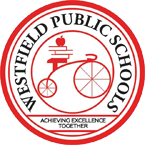BOSTON – On June 25, the Department of Elementary and Secondary Education (DESE) released initial guidance for school reopening this fall that prioritizes getting students safely back to school in person, following a comprehensive set of health and safety requirements.
The Department is also requiring schools to create hybrid learning plans to teach students in-person and remotely on alternating schedules, and to have robust remote learning plans in place, should those alternate learning models be needed.
In addition, the Baker-Polito Administration announced the allocation of approximately $200 million from the Commonwealth’s federal Coronavirus Relief Fund for costs related to reopening public schools. Schools are eligible to receive up to $225 per student for eligible costs incurred due to the COVID-19 public health emergency, such as training for school staff, supplemental social and academic services, reconfiguration of school spaces, leasing of temporary facilities, and acquisition of health and hygiene supplies.
Municipalities, school districts, and charter schools may apply for these funds in the next few weeks, and this funding is intended to supplement other resources the Administration is providing to local cities and towns for COVID-19 response efforts. Other potential funding sources to support school reopening include $502 million from the Coronavirus Relief Fund that had previously been allocated by Governor Charlie Baker to cities and towns, as well as $194 million in federal Elementary and Secondary School Emergency Relief Fund grants.
In partnership with legislative leadership, the Administration is also committing $25 million in federal funds for a matching grant program to help school districts and charter schools close technology gaps that have inhibited remote learning for students and families who lack access to computers or internet connections.
The reopening approach is built on a thorough review of current medical and scientific literature and was developed after extensive consultation with medical professionals from Massachusetts General Hospital, the Massachusetts COVID-19 Command Center’s Medical Advisory Board, and others. Based on the current public health data and COVID-19 trends, the medical community supports Massachusetts students’ return to in-person learning, with appropriate health and safety guidelines in place.
“This plan will allow schools to responsibly do what is best for students — bring them back to school to learn,” said Governor Charlie Baker. “COVID-19 has presented numerous challenges for our schools, educators and students, but through collaboration with school officials and the medical community, we have developed both a comprehensive plan endorsed by the Massachusetts Chapter of the American Academy of Pediatrics and a financial package to support schools throughout the Commonwealth.”
“Our educators and staff are essential to preparing for the safe and successful fall reopening of schools throughout the Commonwealth,” said Lt. Governor Karyn Polito. “As we prepare to head back to school, we continue to work collaboratively to develop guidance that will support the ability to meet the challenges presented by this public health emergency.”
“There is clear consensus from both education and medical groups that while we must respect the risks of COVID-19 transmission associated with in-person schooling, we must also acknowledge the challenges and consequences of keeping students out of school, which affects their physical health, social and emotional well-being and educational progress,” said Education Secretary James Peyser.
At this time, the public health evidence suggests schools have not played a significant role in COVID-19 transmission and that children, particularly younger children, are less likely than adults to be infected with COVID-19. Furthermore, if they become infected, it appears children may be less likely to transmit COVID-19 to others.
“The message from the medical community remains strong and consistent: We need to get our children back to school, as soon as it is safe to do so,” said Sandra Nelson, MD, an infectious diseases physician at Massachusetts General Hospital. “We believe that returning to the classroom — with appropriate precautions in place — can be done safely if we all remain vigilant. Our children deserve nothing less.”
The Massachusetts Chapter of the American Academy of Pediatrics endorsed the guidance.
“The Massachusetts Chapter of the American Academy of Pediatrics and the Department of Elementary and Secondary Education share the goal of bringing most students in the Commonwealth back to in-person learning this fall while minimizing the risk to them, the school staff, and their families,” said Dr. Lloyd Fisher, incoming president of the MCAAP. “We are quite pleased with the recommendations in these guidelines and impressed with how thorough the Department was in researching the current data and their understanding of the spread of illness, impact of the disease on children, likelihood of children infecting others, and the significant negative consequences that prolonged school closures have on the educational, emotional and social well-being of children.”
To reopen schools in the fall, school officials must develop the following three models of learning:
In-person learning with new health and safety requirements: Students return to school buildings, but schedules, classrooms and protocols are modified to meet health and safety requirements.
Hybrid learning: Students learn both in-person and remotely.
Remote learning: Learning takes place entirely remotely.
“While the Department is working toward the full in-person return to school of all students, school districts must be prepared to work on a continuum of three broad options for reopening,” said Elementary and Secondary Education Commissioner Jeffrey C. Riley. “We feel this gives school districts the readiness they need to educate students in person, and the flexibility to adapt if the health situation changes.”
“My first concern is student and community safety, and all of us on the Return-to-School Working Group focused on how to balance this priority with learning,” said Takeru Nagayoshi, an English teacher at New Bedford High School and the 2020 Massachusetts Teacher of the Year. “This initial back-to-school guidance is the product of many stakeholders’ combined efforts. It recognizes the importance of in-person learning while establishing guardrails to prevent the virus from spreading.”
Public school officials will need to indicate to DESE if it is feasible for their district to return students to school for in-person learning following the health and safety requirements. In August, districts will be required to submit comprehensive fall reopening plans that include all three models. Additionally, all school districts will also need a focused plan for effectively serving special student populations in each of these learning models.
In-Person Learning
The guidance prioritizes getting students back to in-person learning — safely, following a comprehensive set of health and safety requirements. The Department DESE is asking school officials to change classroom configurations to space students farther apart from each other, set up additional classrooms in libraries, auditoriums, and cafeterias, and make scheduling changes.
Elementary schools should aim to keep students in the same group throughout the day, and middle and high schools are encouraged to minimize mixing student groups to the extent feasible.
All students in second grade or older are required to wear a mask or face covering, with time built in for mask breaks throughout the day.
Kindergarten and first grade students should be encouraged to wear a mask or face shield.
Face shields may be an option for students with medical, behavioral or other challenges who are unable to wear masks.
All adults, including educators and staff, are required to wear masks or face coverings.
Exceptions to mask or face covering requirements must be made for people for whom wearing a mask or face covering is impossible due to medical conditions, disability impact or other health or safety factors.
Physical Distancing
As reviewed and advised by the Massachusetts COVID-19 Command Center Medical Advisory Board, schools are encouraged to aim for a physical distance of 6 feet when feasible, and 3 feet is the minimum distance allowed as informed by evidence.[i]
There is no maximum number for group size, so long as schools adhere to the physical distancing requirements above.
Health Screening
Families will be the primary health screeners of students, looking for signs or symptoms of COVID-19. Screening procedures are not required for students to enter school. Temperature checks are not recommended for students due to the high likelihood of potential false positive and false negative results.
Families will receive information to support them in conducting symptom checks, and they should not send students to school if they exhibit COVID-19 symptoms. The Department will provide a symptoms checklist and other guides to help families and students.
A student who shows COVID-19 symptoms during the school day should be moved to a specific room designated for medical isolation until they can be picked up by a family member. This room must be separate from the nurse’s office or other space where routine medical care is provided.
Schools should have an inventory of standard health care supplies such as masks and gloves. The Department has made $193.8 million in federal funds available to help districts address needs associated with the COVID-19 pandemic, such as technology and safety supplies. That money, available through CARES Act Elementary and Secondary School Emergency Relief Funds, is allocated based on district poverty levels. In addition, DESE is providing a bulk state ordering opportunity through which districts can submit their orders and payment to make the process as easy as possible.
Hybrid Learning Plans
In planning for the hybrid learning models, DESE recommends that school officials consider using an A/B cohort model that isolates two distinct groups of students who attend school in-person on different weeks, days or half days each day.
For instance, Group A would attend school in person from Monday through Friday of Week 1, while Group B learns at home remotely. In Week 2, Group B would attend school in person and Group A would engage in remote learning at home. The week on/week off model may be easier on families, giving them a chance to prepare for childcare for a full week at a time.
Remote Learning
Remote learning will continue to be a feature for many students this fall. The Department’s guidance states it is critical that districts have remote learning plans in place in the event modified in-person learning is not possible or in case remote learning is needed for individual students who cannot yet return to school in-person.
Additional guidance and final reopening guidance will be released in coming weeks. The guidance will address subjects including transportation, facilities and operations, athletics and extra-curricular activities, electives, student and teacher supports and other key policies.





